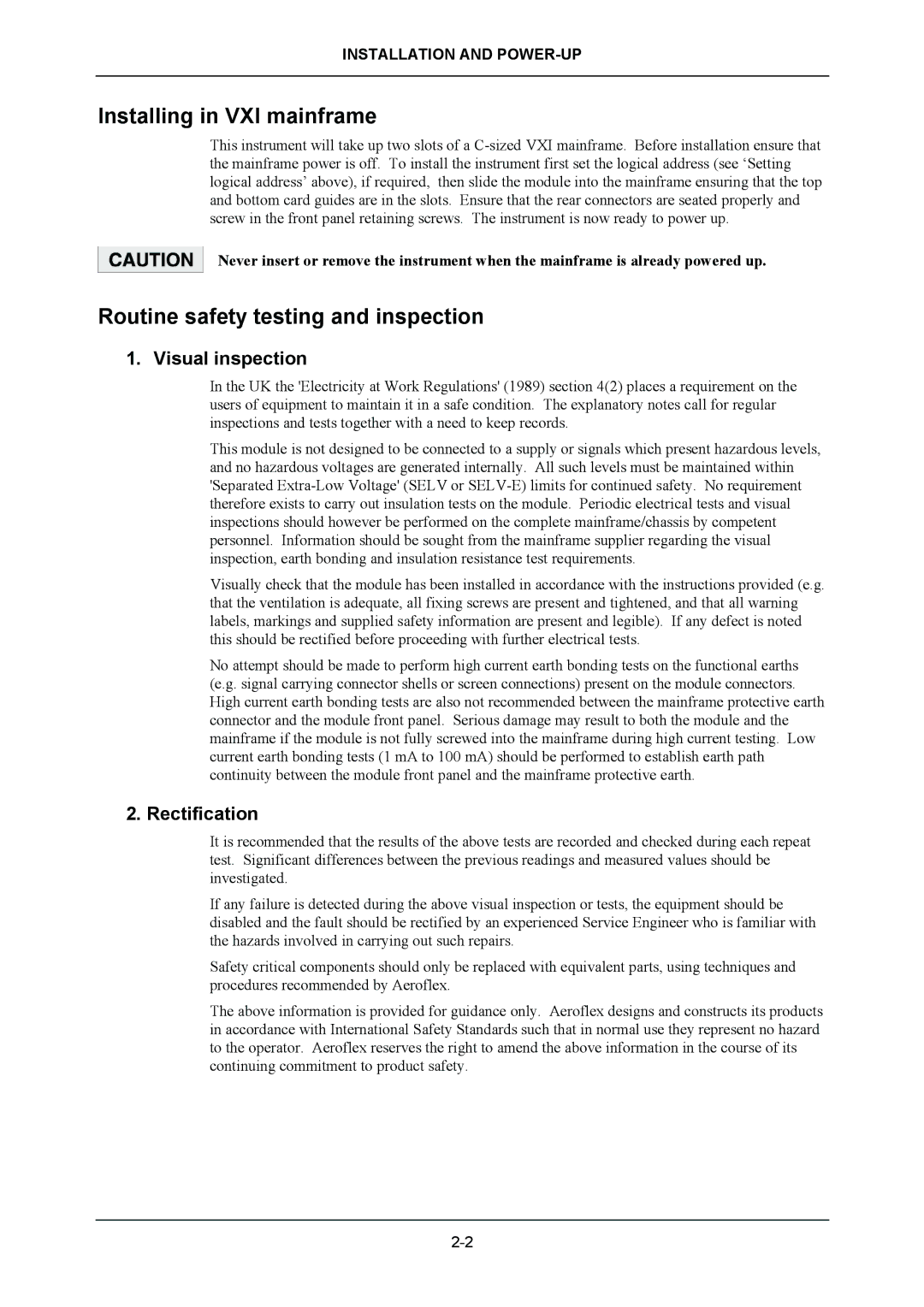
INSTALLATION AND
Installing in VXI mainframe
This instrument will take up two slots of a
Never insert or remove the instrument when the mainframe is already powered up.
Routine safety testing and inspection
1. Visual inspection
In the UK the 'Electricity at Work Regulations' (1989) section 4(2) places a requirement on the users of equipment to maintain it in a safe condition. The explanatory notes call for regular inspections and tests together with a need to keep records.
This module is not designed to be connected to a supply or signals which present hazardous levels, and no hazardous voltages are generated internally. All such levels must be maintained within 'Separated
Visually check that the module has been installed in accordance with the instructions provided (e.g. that the ventilation is adequate, all fixing screws are present and tightened, and that all warning labels, markings and supplied safety information are present and legible). If any defect is noted this should be rectified before proceeding with further electrical tests.
No attempt should be made to perform high current earth bonding tests on the functional earths (e.g. signal carrying connector shells or screen connections) present on the module connectors. High current earth bonding tests are also not recommended between the mainframe protective earth connector and the module front panel. Serious damage may result to both the module and the mainframe if the module is not fully screwed into the mainframe during high current testing. Low current earth bonding tests (1 mA to 100 mA) should be performed to establish earth path continuity between the module front panel and the mainframe protective earth.
2. Rectification
It is recommended that the results of the above tests are recorded and checked during each repeat test. Significant differences between the previous readings and measured values should be investigated.
If any failure is detected during the above visual inspection or tests, the equipment should be disabled and the fault should be rectified by an experienced Service Engineer who is familiar with the hazards involved in carrying out such repairs.
Safety critical components should only be replaced with equivalent parts, using techniques and procedures recommended by Aeroflex.
The above information is provided for guidance only. Aeroflex designs and constructs its products in accordance with International Safety Standards such that in normal use they represent no hazard to the operator. Aeroflex reserves the right to amend the above information in the course of its continuing commitment to product safety.
